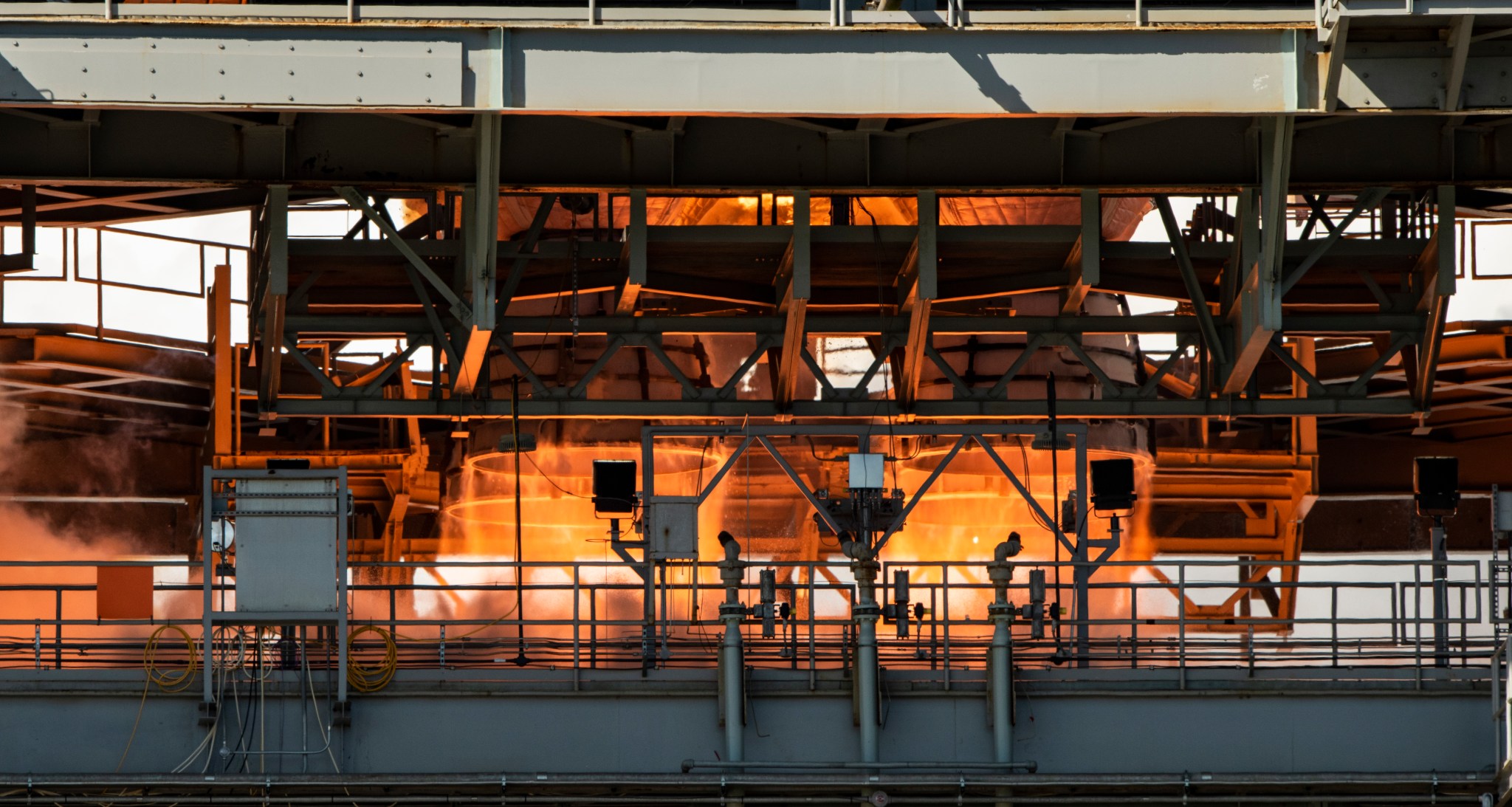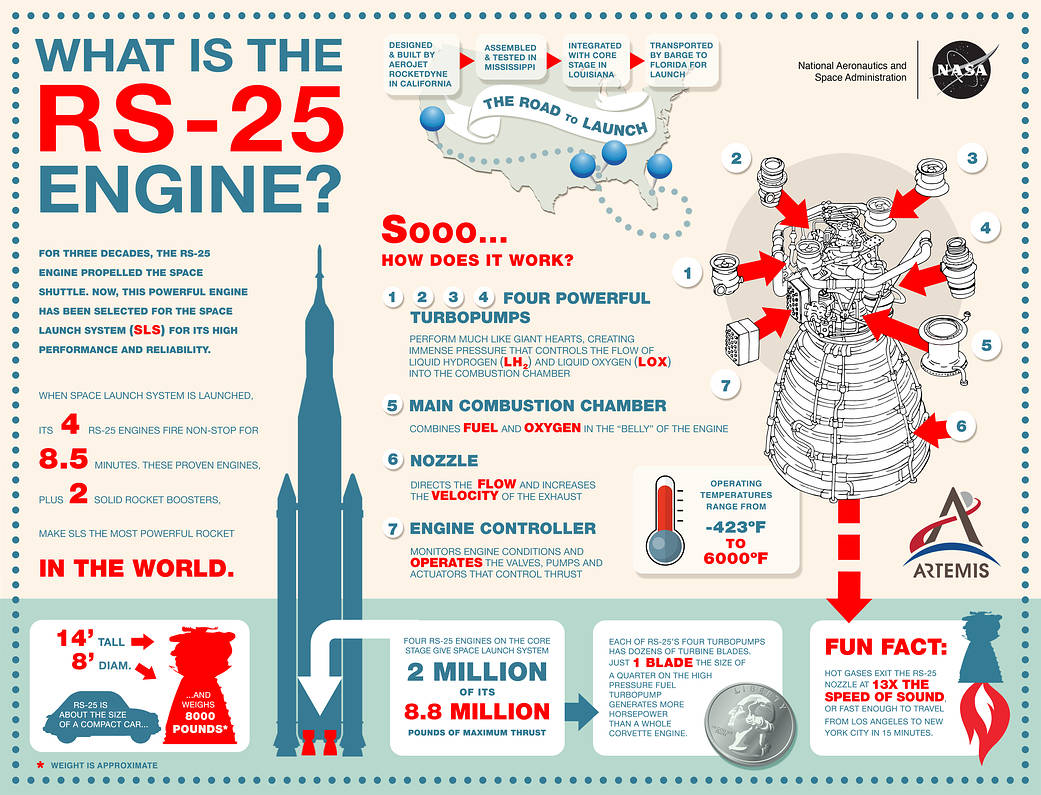The Space Launch System (SLS) rocket engines are high-performance machines that are exposed to extremely low temperatures and extremely high temperatures and pressures during fueling and flight. During launch, more than 700,000 gallons of liquid hydrogen and liquid oxygen must be delivered from the SLS core stage tanks to the four RS-25 engines at a consistent temperature and pressure. Liquid hydrogen fuel flows into the engines at the extreme super cold, or cryogenic, temperatures of minus 423 degrees Fahrenheit and liquid oxygen at minus 297 degrees Fahrenheit.

Before this massive amount of fuel is delivered to the engines, SLS engineers chill down the engines to thermally condition them to receive the propellant. The engine thermal conditioning is “kick started” by delivering liquid hydrogen to the engines at the same time the liquid hydrogen core stage tank is being filled. This procedure was developed during core stage Green Run testing when all four engines were chilled and ignited, just as they are during launch. By doing this early in the launch countdown, engineers can evaluate data and ensure that the engine components are sufficiently saturated with super cold liquid hydrogen that chills them before they proceeded with terminal count down leading to launch.
Cooling down the engines in advance, a process called prechill, is an important step before launch as it ensures that critical engine components such as pump bearings are chilled down to the temperatures required for operation. The core stage “bleed valve” allows hydrogen to flow through the engines and thermally condition them by starting to chill them down. Via the bleed valve, the propellants flow through the engines’ turbopumps, bearings, nozzles, and other components without being combusted. It is important that the cryogenic liquid hydrogen is maintained at a consistent temperature as it flows through the engine turbopumps. If liquid hydrogen warms, it turns to gas and can form bubbles that cause an issue thermally conditioning the engine.
During engine chilling, engineers evaluate multiple sources of data from the SLS core stage, the engines, and the ground systems including pressure and thermal data to ensure the engines are thermally conditioned and ready to be filled with propellant and ignited during the terminal countdown right before launch. During the terminal countdown starting at T-30 seconds, the flight computers are controlling the rocket and monitoring all its systems and the launch is controlled by the autonomous launch sequencer, or ALS. The flight computers monitor data from numerous flight data sensors and will stop the launch if they detect that the engines are not thermally conditioned and ready for ignition.
For more information on SLS, please visit the SLS Reference Guide: https://www.nasa.gov/exploration/systems/sls/reference_guide.html



























